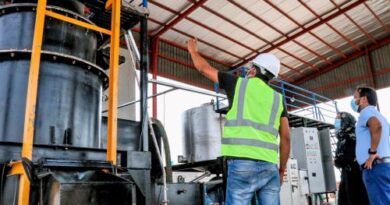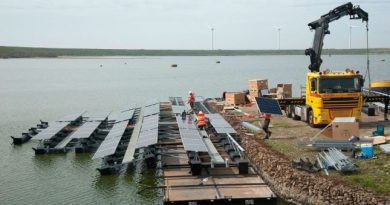Global hydrogen demand could increase 7 times by 2050: IRENA

Global hydrogen demand could increase by a factor of almost seven by 2050, to reach 74 EJ in IRENA’s 1.5°C Scenario – a large increase but still just a fraction of global energy consumption, a new report finds.
“Reaching that figure will require an accelerated pace of renewable capacity deployment, although some fossil fuel-based hydrogen could be substituted for renewables- based hydrogen. Two-thirds of the hydrogen supply is expected to be from renewable hydrogen and one-third from fossil fuel-based carbon capture and storage,” states International Renewable Energy Agency in the recently released World Energy Transitions Outlook: 1.5°C Pathway.
The report makes the following key predictions:
- In 2050, about a quarter of all the hydrogen produced could be globally traded, with about equal shares transported by pipelines and ammonia ships. Pure hydrogen is expected to be transported mainly using existing natural gas networks that are repurposed to carry hydrogen. They represent the cheapest option for transporting pure hydrogen, at costs of USD 0.08–0.12/kg per 1 000 km in 2050.
- Europe has an integrated network and heavy industrial activity; some countries have limited production potential and high renewable costs. Latin America is less integrated than Europe and has larger distances to cover, but it also has large regional cost differences, as a result of differences in the cost of capital. The costs of transporting hydrogen through new pipelines would be twice as high, at USD 0.16–0.24/kg for every 1 000 km, but it would still be lower than shipping options for distances of 3 000–5 000 km.
- The global volume of hydrogen trade by pipeline would be relatively small compared with today’s natural gas trade; by 2050, it would be about a third more than current natural gas imports to Europe. Repurposing a fraction of today’s network would therefore be enough to supply future needs. Using existing infrastructure is essential for future trade. It is also the most promising option for avoiding stranded natural gas assets and enabling low-cost regional trade of pure hydrogen.
- New trade markets can lead to different roles for energy players. Some of the largest potential exporters of hydrogen by pipeline in 2050 are Chile, North Africa and Spain, which together represent almost three- quarters of the pipeline trade market. North Africa and Spain take advantage of their high-quality solar resources and proximity to northwest Europe, which has high hydrogen demand and poor renewable resources and leverage an existing natural gas network.
- For Morocco, exporting hydrogen would mean a drastic change in its energy balance, transitioning from a net energy importer to an exporter that exports more than 2.5 times its entire 2019 national energy supply solely by pipeline. Chile would also export hydrogen exporting the equivalent of 60% of its primary energy supply in 2019. On the importing side, Japan, the Republic of Korea and the Rest of Europe49 are expected to import almost all of their hydrogen and ammonia demand
- By 2050, the green hydrogen potential below USD 1/kg is about eight times global final energy demand in 2020. That cost is more than three times the natural gas price in the United States in 2020; it is comparable to the cost in high-price markets in 2020 and much lower than the import price into the European Union that prevailed in December 2021, which was above USD 4/kg equivalent (in energy terms).
- By some measures, it may even be a conservative target by 2050. For instance, the United States Department of Energy targets USD 1/kg by 2030 through its Hydrogen Shot (DoE, 2021). Chile targets USD 1.5/kg by 2030 in its strategy, and the latest estimates point towards USD 1/kg by 2030 (Gobierno de Chile, 2021). These values are the most optimistic; with more conservative assumptions, this potential will be lower.
- Mobilisation of large investment flows is also needed to finance the more than 10 TW of renewable energy, 4.4 TW of electrolysis and 1.6 TWh of batteries that are needed to produce green hydrogen.
(Visited 207 times, 1 visits today)




